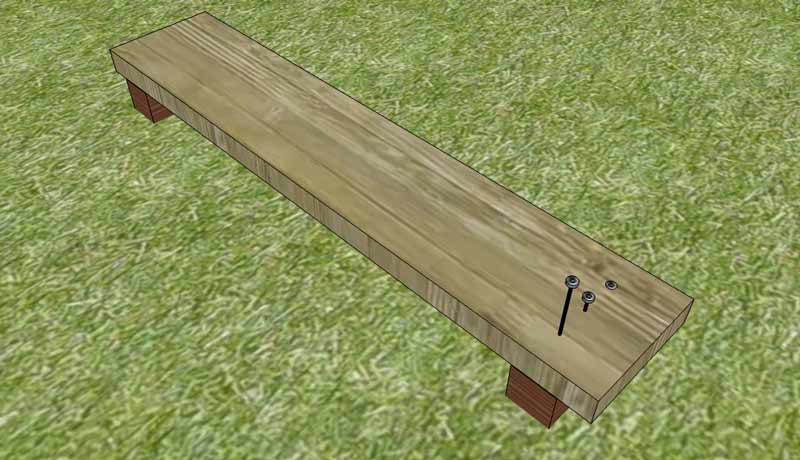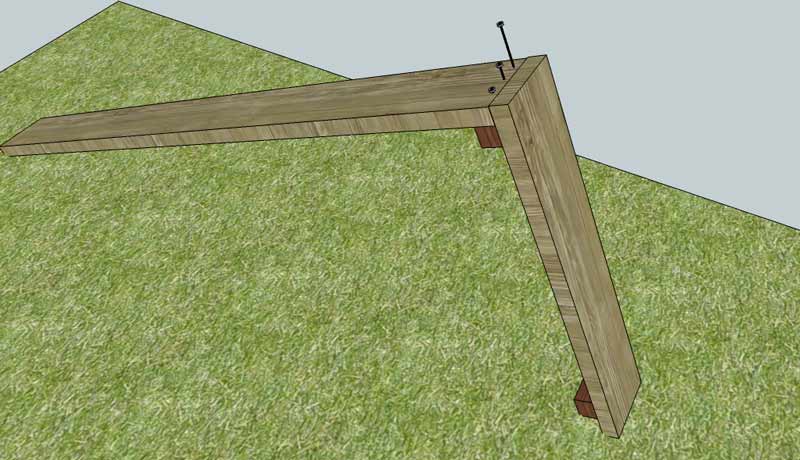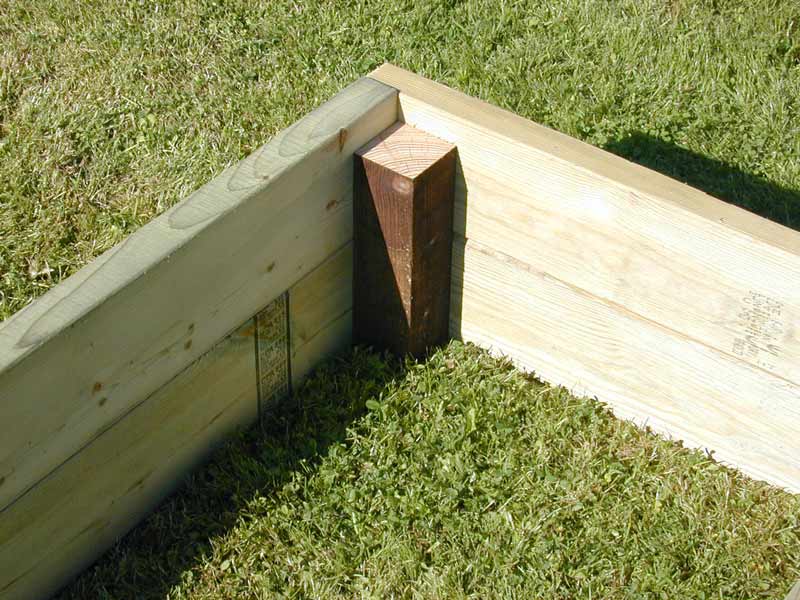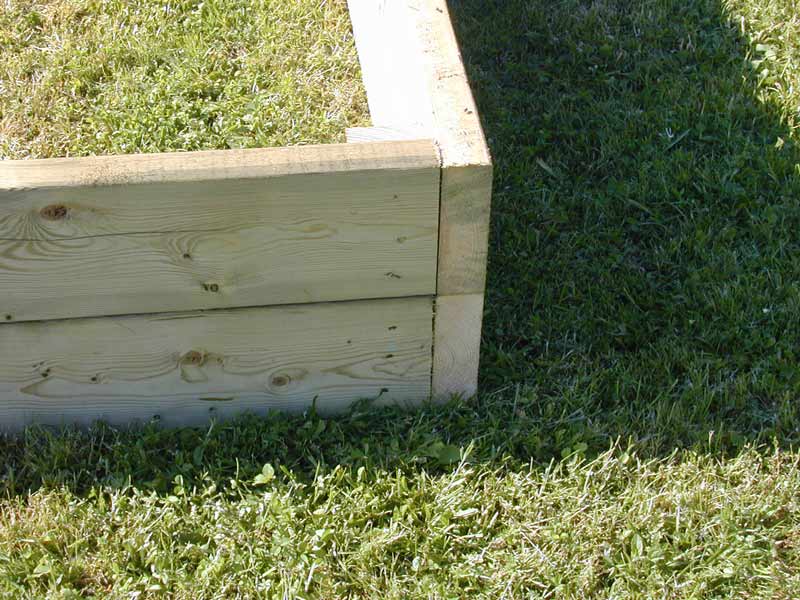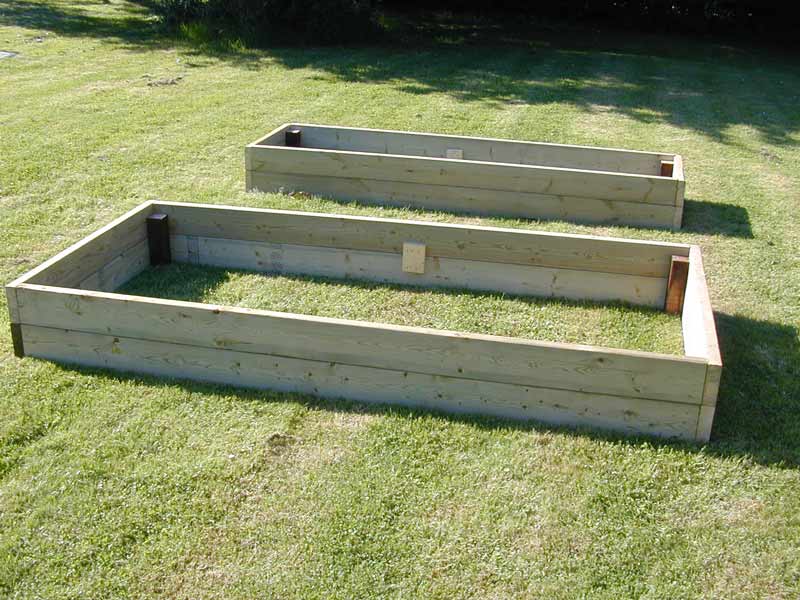Raised flower beds
Raised flower and vegetable beds can make for attractive and easy to use planting containers in a garden, keeping contents separated from lawns and other borders.
Design
There are a multitude of bed designs and construction techniques. Typically they will be at least 6" (150mm) high, but possibly as much as waist height. Timber, and masonry walls are commonly used for retaining the edges. Taller beds can be good for people with bending or access difficulties (e.g. wheelchair users).
Simple planked design
The following beds are one of the simplest planked designs. These were made from 6x2" tanalised / treated timber, with short 10" sections of 3x3" fence post cut to act as corner supports.
Assembly
Having considered a number of construction techniques, it was decided that a simple nailed fixing would be adequate (and fast since a pneumatic framing nailer was handy!). Each of the planks were cut to length first. The end panels were then nailed through the face into the post section, using an offcut of timberas a spacer to set the distance from the end of each panel correctly. The nails in this case were 3.5mm thickness 95mm clipped head ring shank nails.
Once the ends were made up, the long panels could be laid in position on the end sections. Working on grass allowed enough grip on the ground to assemble the first joint with the boards "stood up" on the ground in an inverted triangle:
After that, the other end and then final side can be fixed in the same way. Sticking some nails in from box end and side of the bed creates a joint that is difficult to pull apart since it is pinned on two axis.
Inside corner detail:
Outside corner detail:
Final result:
The narrow bed here being ideal for runner beans etc since it permits easy access to both sides once a row of canes / strings are run down the middle.
